

William Stopford
Every SUV, ute and van discontinued in Australia in 2025
5 Hours Ago
The Sorento PHEV maintains the family-hauling capabilities of its ICE equivalents and can do most daily commutes emissions-free – but it ain't cheap.
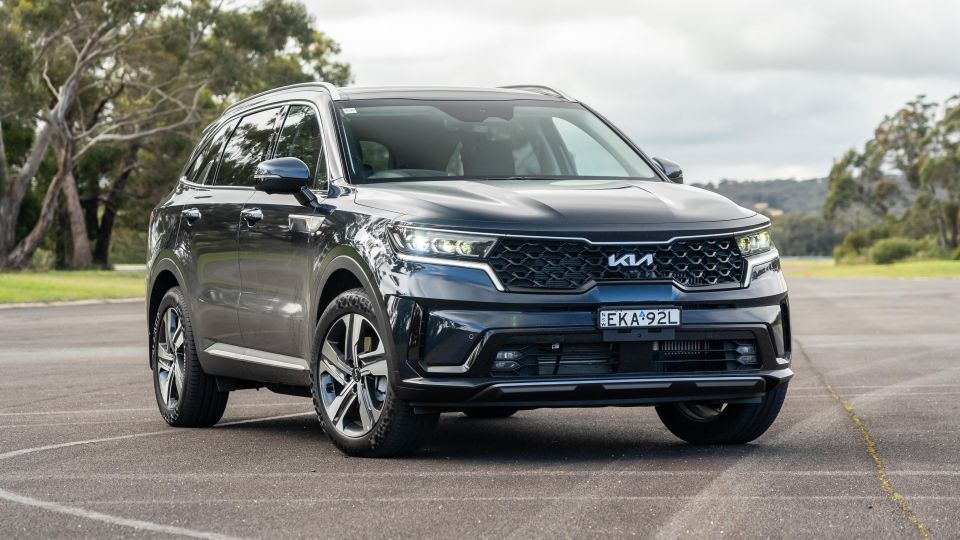
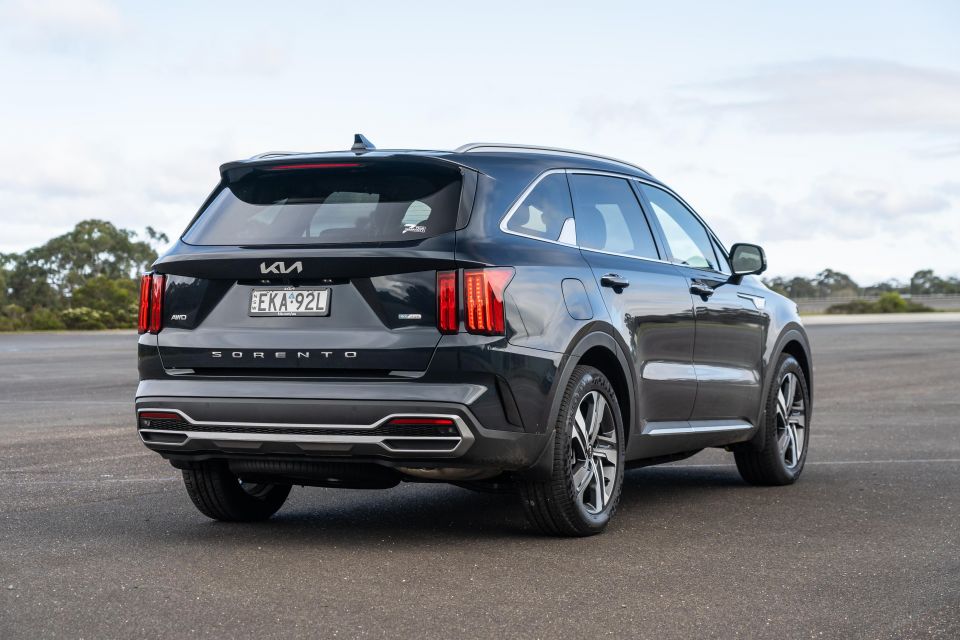

Marketplace Editor
New from
$45,850
excl. on-roads

Marketplace Editor
New from
$45,850
excl. on-roads


Marketplace Editor
New from
$45,850
excl. on-roads

Marketplace Editor
New from
$45,850
excl. on-roads
Quickly see how this car stacks up against its competition. Select any benchmark to see more details.
Where expert car reviews meet expert car buying – CarExpert gives you trusted advice, personalised service and real savings on your next new car.
Kia is looking to unsettle Toyota in the hybrid SUV game.
The Korean brand is aiming straight at the new Kluger Hybrid with not one, but two electrified versions of its flagship Sorento SUV set to launch over the coming months.
First to arrive is the vehicle you see here, the 2022 Kia Sorento Plug-in Hybrid, launching solely in flagship GT-Line specification with a price tag bigger than any Kia before it.
Still, its drive-away price of $81,990 is line-ball with flagship versions of the Mazda CX-9 and Toyota Kluger – though neither rival offers proper electric-only driving capability. To get plug-in hybrid power and seven-seat practicality elsewhere, you need to head over to Volvo and splurge over $120,000 on an XC90 Recharge PHEV.
It also undercuts the smaller but more powerful BMW X3 xDrive30e ($104,900) and Mercedes-Benz GLC300e 4Matic ($93,800) plug-in hybrids. When you look at it that way, it doesn’t seem that overpriced.
But can it match European PHEV alternatives beyond on-paper comparisons, and justify the near-$15,000 premium over its diesel counterpart? We spent a week behind the wheel to find out.

The Sorento GT-Line PHEV AWD has a list price for $79,330 plus on-road costs, but the Korean brand is launching the electrified SUV from $81,990 drive-away.
That equates to a $14,500 premium over the on-road price of the in-demand GT-Line Diesel AWD, though it still works out slightly cheaper than the Toyota Kluger Grande AWD Hybrid, which is listed from a more affordable $75,400 before on-roads but jumps to $82,105 drive-away with standard paint based a Melbourne postcode.
See the full price list below:
Options
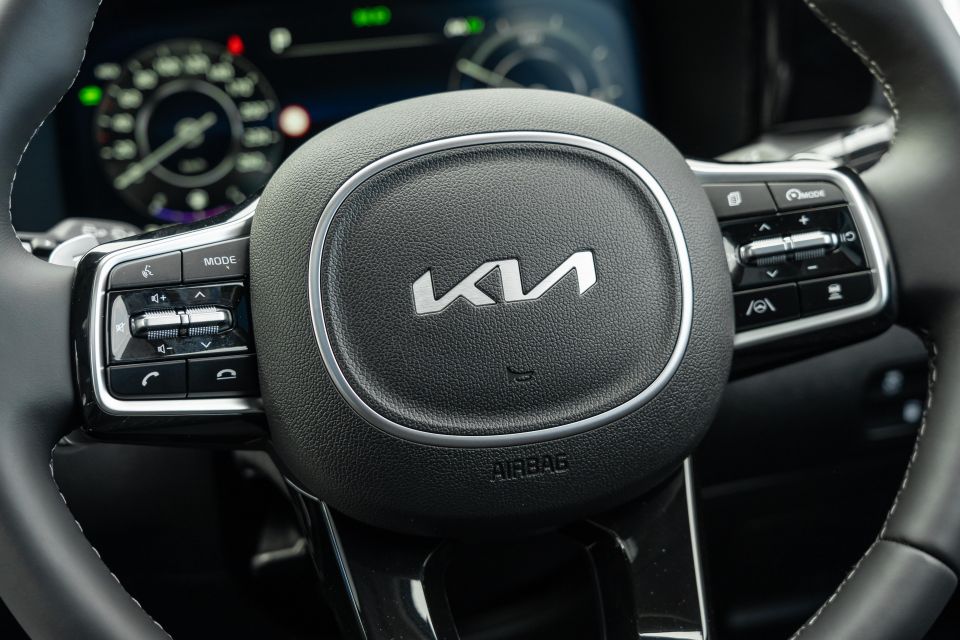
In terms of rivals, the Sorento PHEV technically has no direct competitors at this price point, though the next-generation Mitsubishi Outlander PHEV will also offer seven seats and plug-in power sometime in 2022.
There’s regular hybrid versions of the Toyota Kluger and Lexus RX L that are both dearer, and you have to hit six figures before you get to the Volvo XC90 Recharge Plug-in Hybrid.
So while it’s a big jump over non-electrified variants, the Sorento PHEV pretty much stands alone at this end of the market.
Rivals include:
All prices exclude on-road costs.
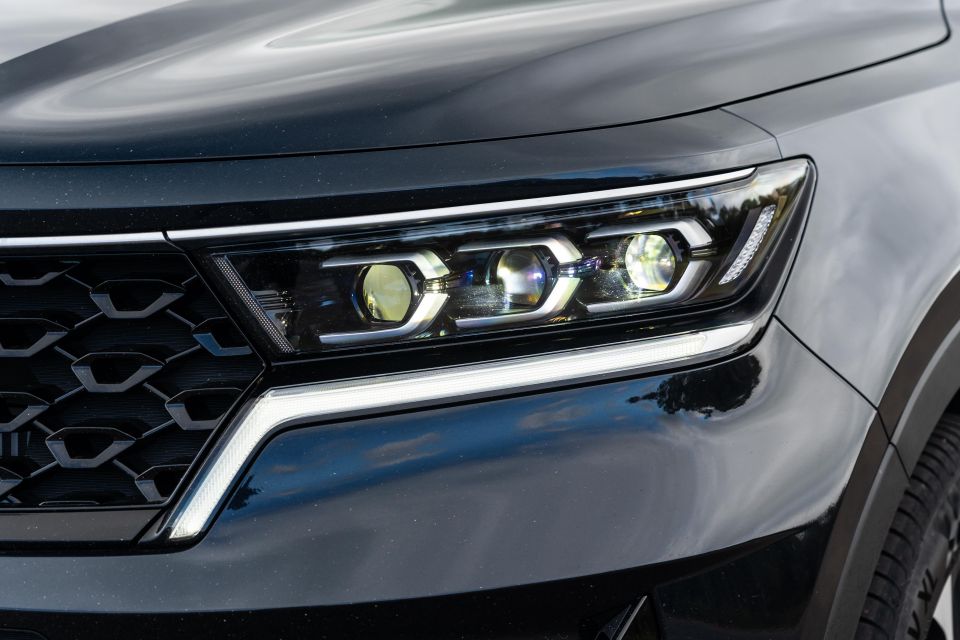
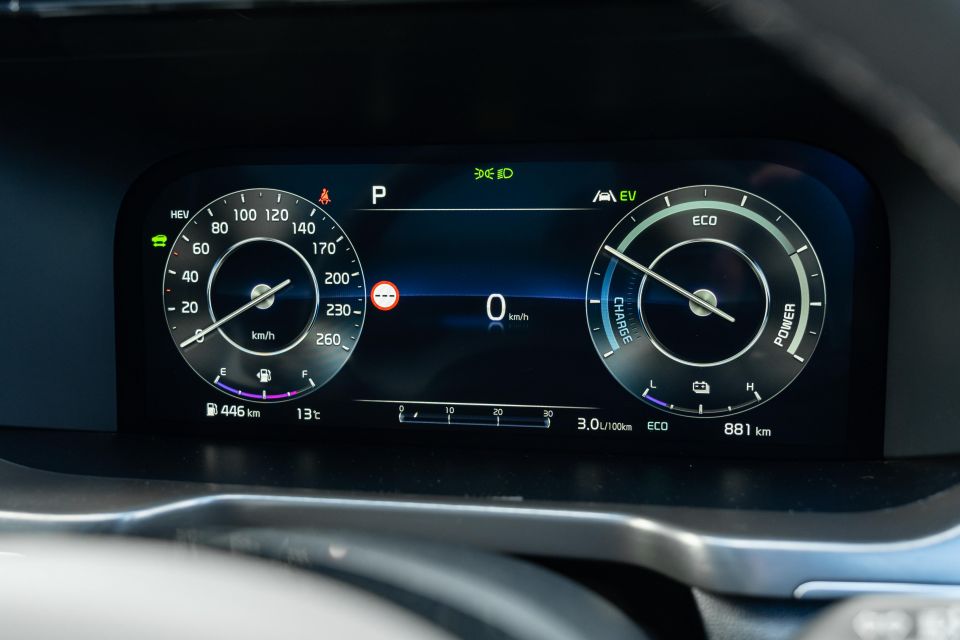
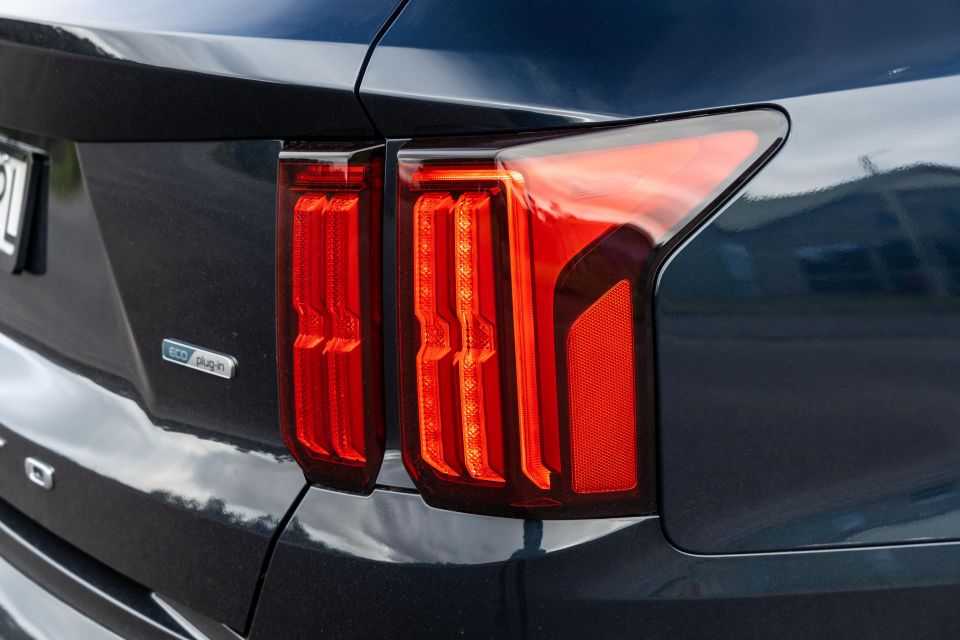

Buy your new car without the stress. It's fast, simple and completely free.

Great service from Travis and team, second time I have used this business would not hesitate to recommend them to anyone
Craig C.
Purchased a Ford Ranger in Sunshine Coast, QLD
CarExpert helped Craig save thousands on his Ford Ranger, now let us save you on your next new car.
Find a dealEquipment highlights include:
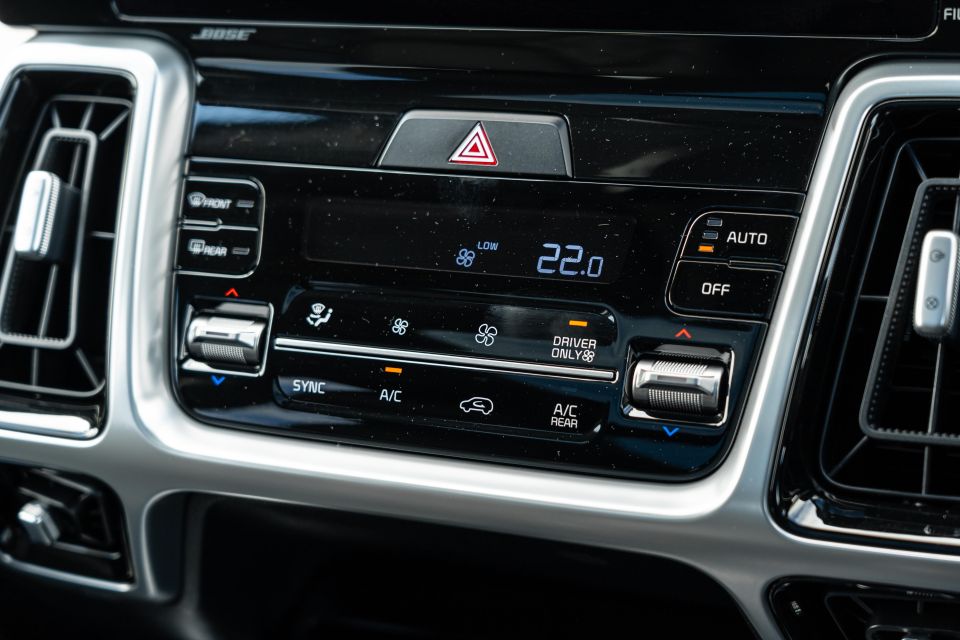
That’s on top of the kit carried over from lower grades, such as:

You’re not left wanting for much, although the Sorento doesn’t offer third or fourth zones of climate control like you’ll find in some high-end seven-seaters. Oddly, the PHEV also misses out on the Smart Park Assist that’s standard on petrol and diesel versions of the GT-Line.
The lack of wireless Apple CarPlay and Android Auto in grades with inbuilt satellite navigation also renders the wireless charging pad redundant if you rely on smartphone mirroring like I do.
We’d also like to see the option of second-row captain’s chairs as offered in other markets like Korea and North America, as well as additional interior colours like the grey and beige nappa leather options available globally.
This is all pretty nitpicky though, and compared to its main rivals the Sorento doesn’t have any glaring omissions on its spec sheet.
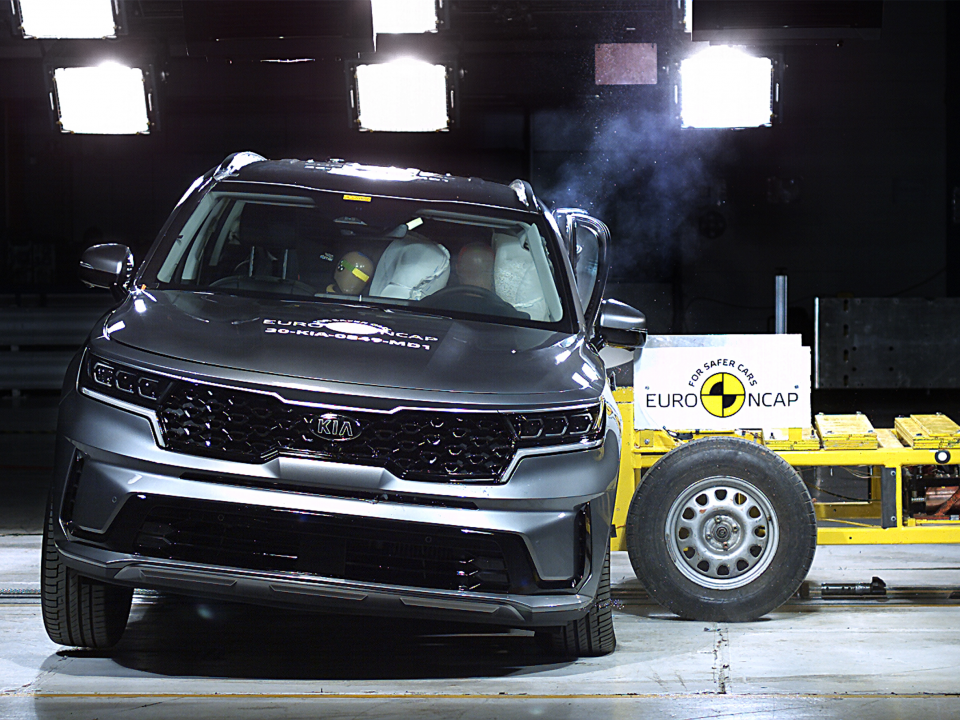
The Kia Sorento wears a five-star ANCAP safety rating based on tests conducted by Euro NCAP in 2020. All variants are now covered by this rating, including petrol, diesel, hybrid and plug-in hybrid versions.
Category scores include 82 per cent for adult occupant protection, 85 per cent for child occupant protection, 63 per cent for vulnerable road users protection and 89 per cent for safety assist.
A key reason for the lower adult occupant score was protection of the driver’s chest and upper legs in the 50km/h frontal offset test, which was rated Weak. Meanwhile, lower-leg protection was deemed Marginal for the driver, as was protection of the front passenger’s upper legs.
While it doesn’t really impact the ANCAP/Euro NCAP score, the Sorento’s curtain airbags don’t properly cover the third row of seating, instead covering part of the window line. It’s a glaring omission given rivals like the Mazda CX-9 and Kluger have full-length curtain coverage, as do European alternatives.
Despite this, there are ISOFIX child seat anchorages in both the second (outboard) and third rows, with top-tether points on all rear positions.

Standard safety equipment across the range includes:
Moving up to flagship GT-Line specification brings upgraded dual-LED projector-type headlights, a 360-degree camera system, the Blind Spot View Monitor side cameras that augment the existing blind-spot assist, and Parking Collision Avoidance Assist that can apply the brakes if the vehicle detects obstacles at low speeds like pedestrians or a wall.
Further, the GT-Line’s enhanced Safe Exit Assist feature will actually lock the doors to prevent an occupant opening the door into the path of an oncoming road user. The PHEV GT-Line misses out on the Remote Smart Park Assist feature of V6 and diesel models.
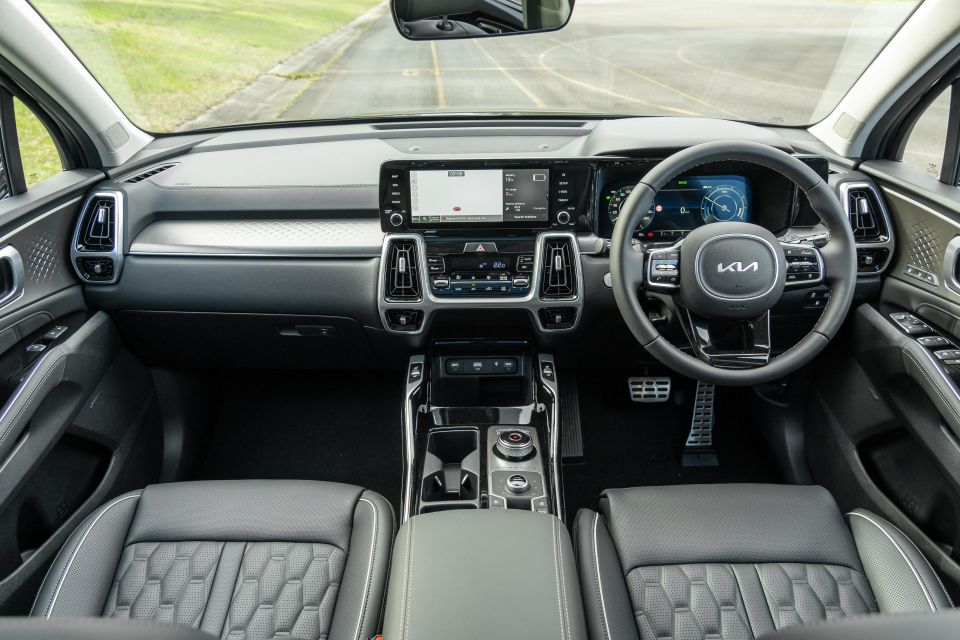
If you’ve sat in a new Sorento GT-Line before (I reviewed the diesel nearly 12 months ago now), it’s much of the same bar the new Kia logo on the steering wheel hub and on the infotainment startup/shutdown animations.
The Sorento’s flagship status really rings true in the design and execution of the cabin, with a good ratio of padded surfaces, the lovely quilted nappa leather upholstery, crisp high-definition displays, and a comprehensive portfolio of comfort and convenience features.
Opting for the PHEV doesn’t really change the experience, though trainspotters will notice the hybrid power meter in place of the tachometer in the digital instrument cluster (though you can select a tacho instead), as well as the EV/Hybrid mode button on the centre console.
There’s also a special button on the centre stack to limit the climate control to just the driver’s zone to save energy – it’ll give you a couple extra kilometres of range according to the on-board trip computer. You also get new hybrid menus within the infotainment and the navigation system can search for nearby charge stations.
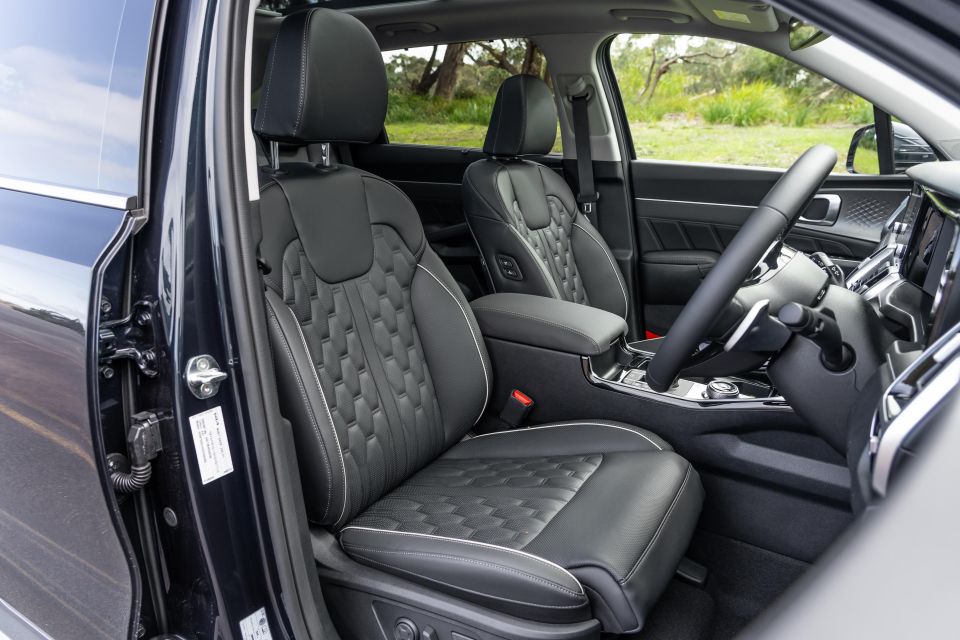
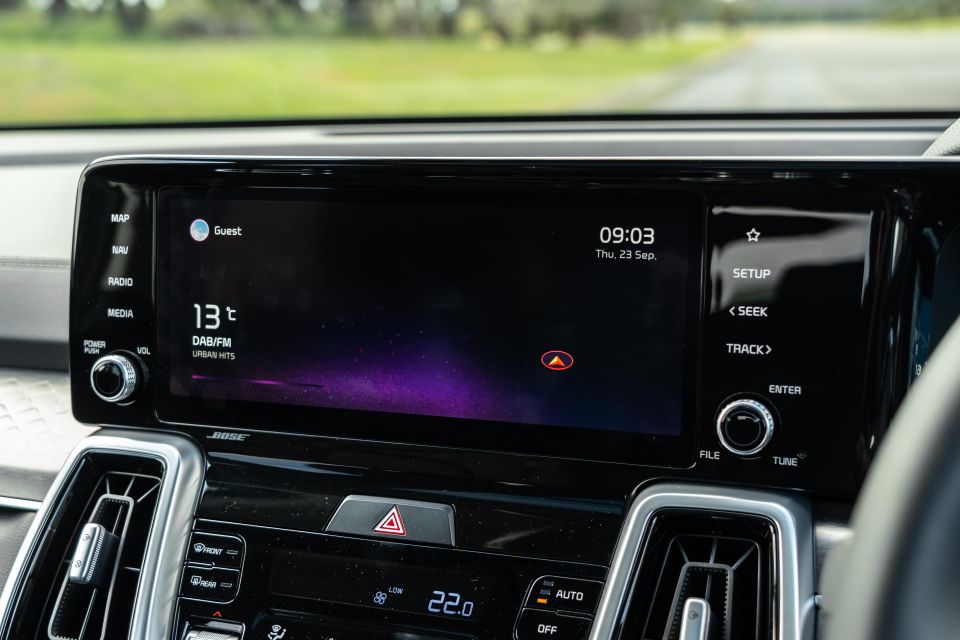
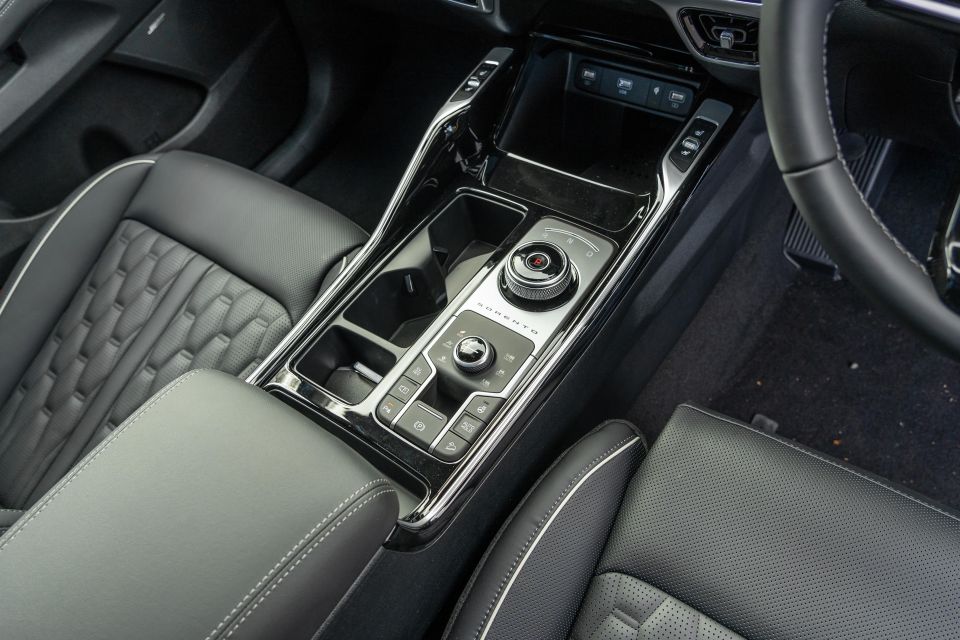
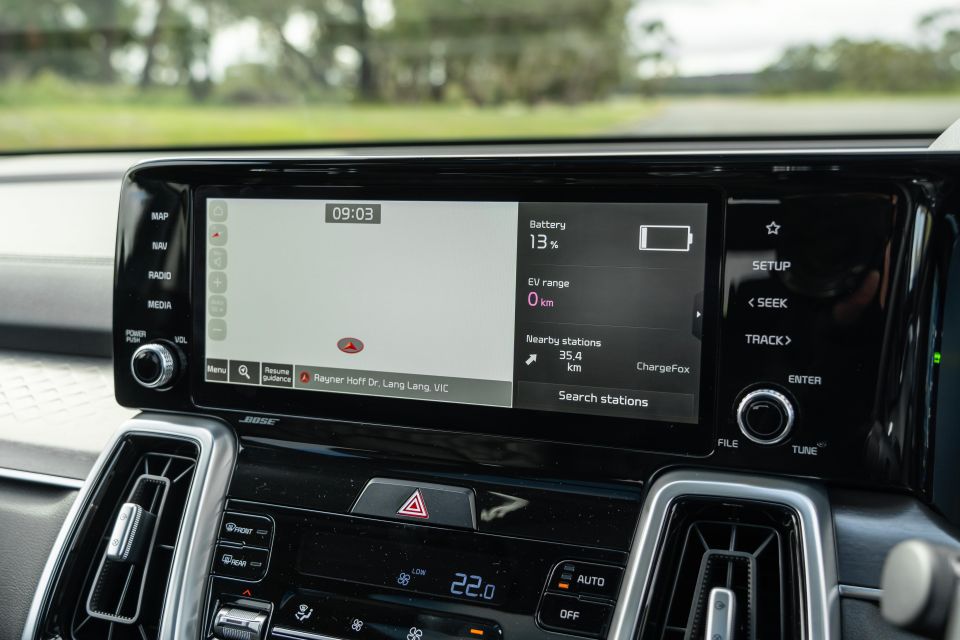
Minor complaints include the harder plastics lower down in the cabin, particularly where your knee comes to rest on the centre tunnel, the heavy use of piano black trim which quickly gets covered in fingerprints and smudges, and the cheap-feeling metal-look plastic inlays which house ambient lighting elements in the doors – which can be adjusted to a huge range of hues.
That’s not to say the Sorento’s cabin feels sub-par; it’s far from it. It’s only really beaten by the related Santa Fe and Mazda CX-9 for overall tactility, but by a fairly small margin.
Space and comfort is great up front, with supportive first-row chairs that offer heaps of electric adjustment and comfort entry for the driver as well as two-position memory, a large cubby under the centre stack for the wireless charging pad as well as a slot for keys or a wallet, two large cupholders along the centre console, and a deep cubby under the padded front-centre armrest.
One small drawback are the shallow door bins and bottle holders up front. Compared to come competitors – or most Volkswagen and Skoda models – you can’t fit large bottles or much else in those compartments. If you regularly carry a larger 1L drink bottle like me, it might get annoying.
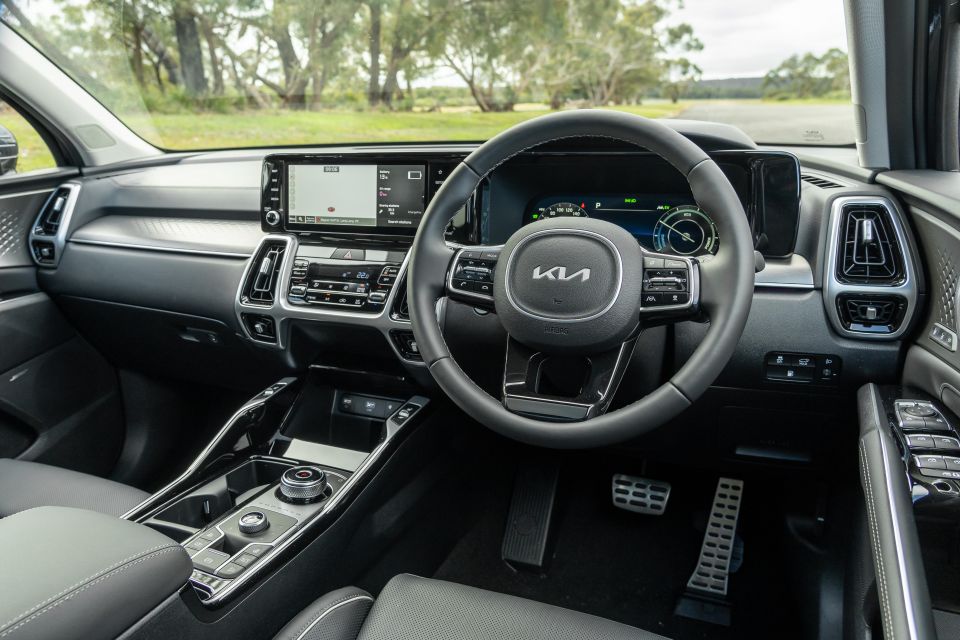
The panoramic glass roof and big windows let plenty of light in to reiterate that feeling of airiness and space, and the overall ambience is right up there with premium competitors.
As for the infotainment, it’s still excellent a year on from this generation’s initial launch. Resolution and response from both the central and driver’s displays, with a layer of polish we’ve come to expect from the Hyundai/Kia group.
The native interface is user-friendly and well featured, including the standard fitment of DAB radio, while smartphone mirroring worked almost flawlessly. My bugs were more an issue of my new phone’s software, which would disconnect Apple CarPlay when audio other than a phone call was attempted to be played back – it repeated itself in other vehicles I’ve driven since, including my own Golf GTI.
Audio quality from the 12-speaker Bose premium audio system is impressive, offering crisp, clear playback and some pretty heavy bass if you turn the levels up a bit.
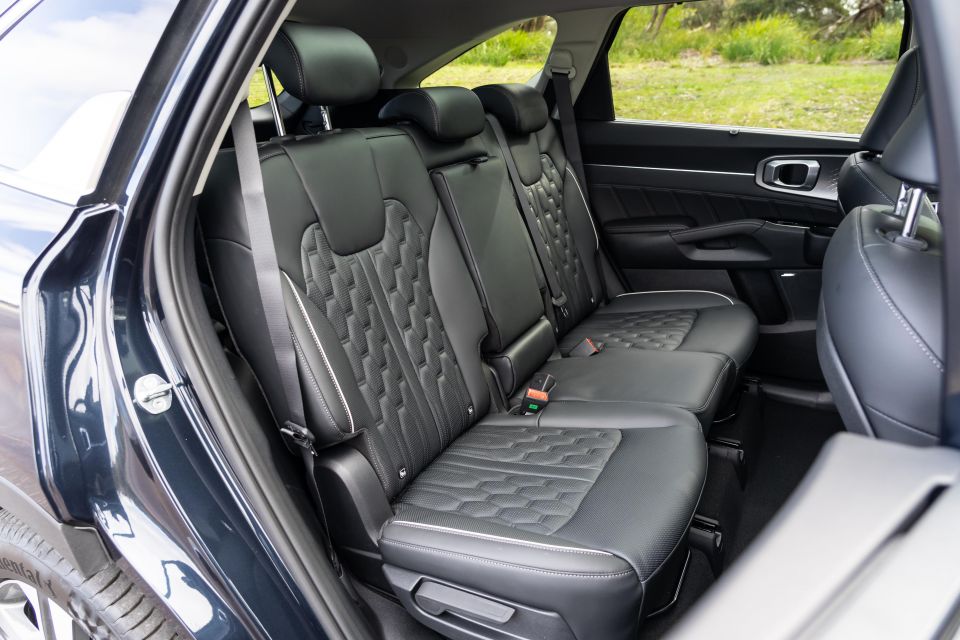
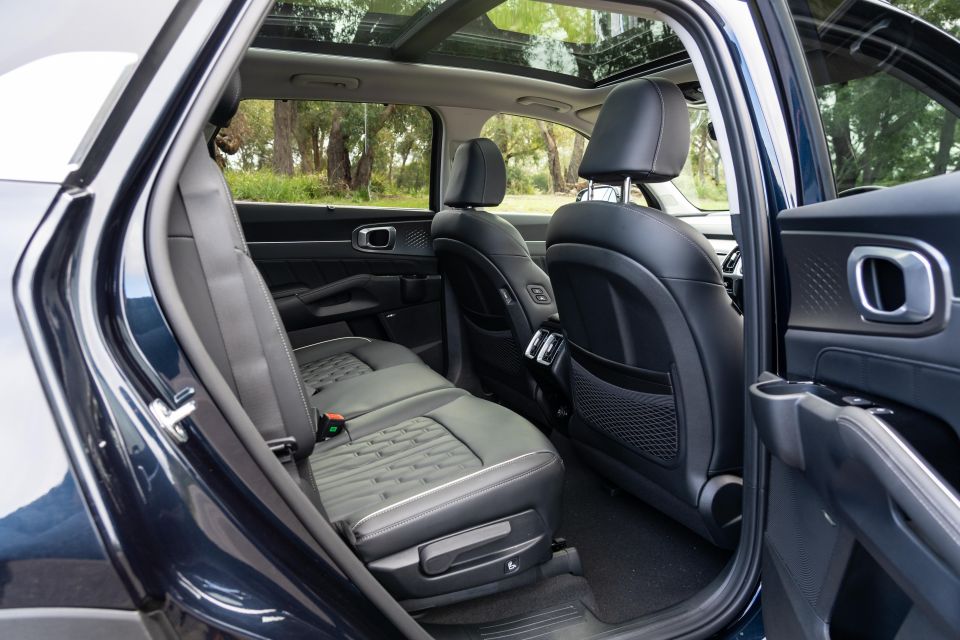
Moving to the second row, the Sorento’s extended wheelbase over previous generations means there’s acres of legroom even for taller passengers. Like the front there’s a real feeling of space thanks to the generous accommodation and big glasshouse.
You could squeeze three adults back there and not lose any friends, and there’s ISOFIX points on the outboard positions. There’s directional air vents, USB-A ports, map pockets, cup holders in the doors, and a fold-down centre armrest with more cupholders in the back. The outboard seats are heated, too.
It’s a shame there’s no temperature control in the rear. There are plenty of amenities back there: the 60:40-split rear seats slide and recline for easy access to the third row, and there are manual sunshades to block out harsh sunlight (or the haters).
There’s surprisingly good space in the third row once you slide the second row forward a touch. If you’re six-foot or under you have decent head- and legroom back there, and there’s even ISOFIX and top-tether points so you can have four child seats across the back two rows.

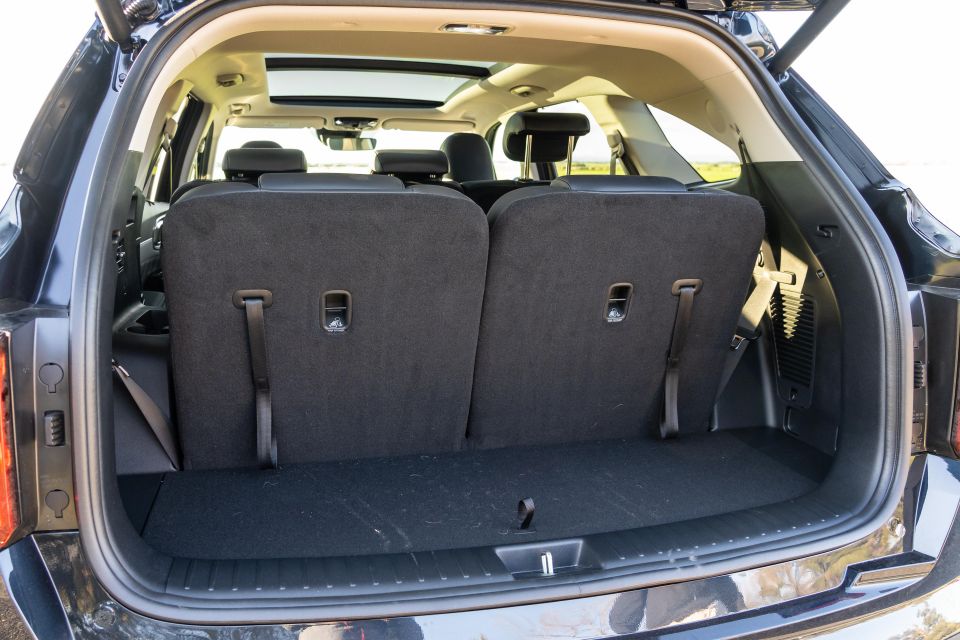
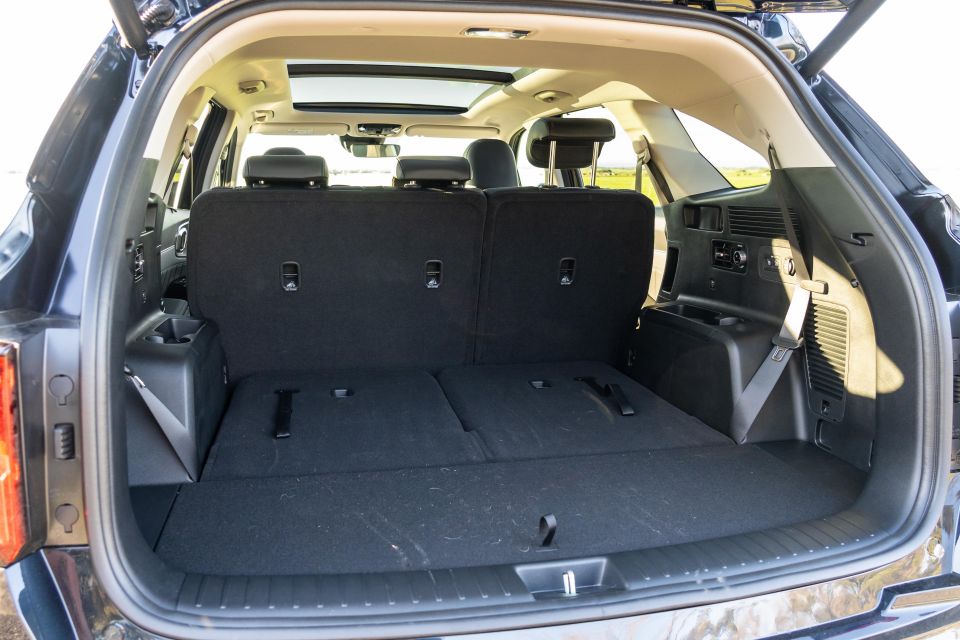
There’s also separate fan controls for the rear passengers, though it’s just fan speed adjustment.
Worth noting, however, is the lack of proper curtain airbag coverage through to the third row. The rear quarter window is small and there’s a decent amount of space between the seat and side of the car thanks to the wheel arch intrusions that double up as cup holders and armrests, but considering the CX-9 and Kluger have ‘bags covering all three rows, it seems like a big oversight. This issue is consistent with the Santa Fe.
Boot space is minimally impacted by the PHEV’s battery system, which is mounted under the second row of seats. There’s 175L with all three rows in play, 604L as a five-seater and 1988L as a seven-seater (VDA). By comparison, V6 and diesel models quote 187L, 616L and 2011L respectively in those configurations.
The Type 2 to 3-pin charge cable comes in a bag with velcro so it doesn’t slide around the load bay, and under the boot floor where you’d usually find extra storage there’s some added electric components. There’s also still a full-size spare wheel too.
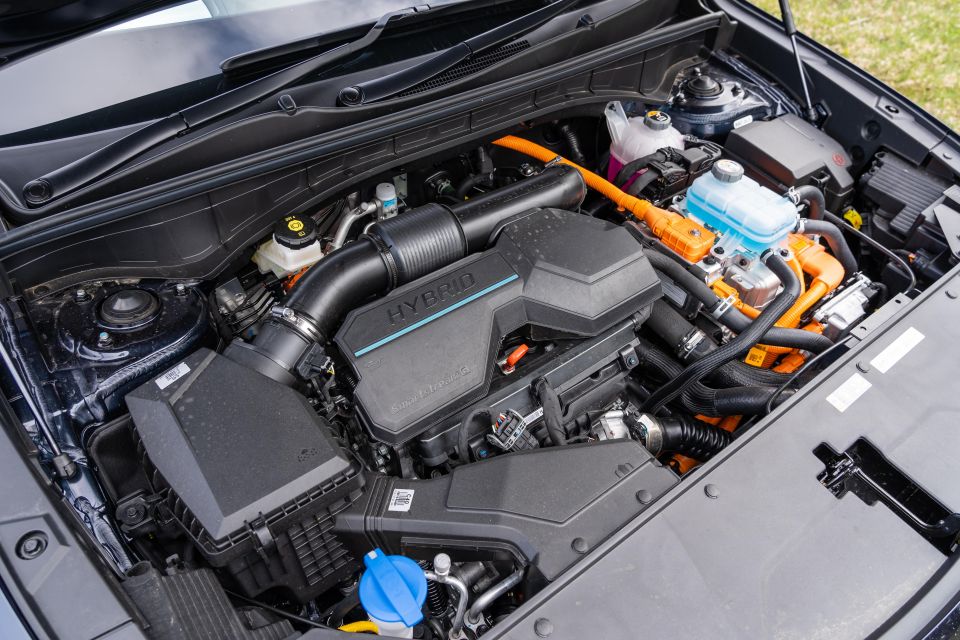
Where expert car reviews meet expert car buying – CarExpert gives you trusted advice, personalised service and real savings on your next new car.
Power in the Sorento Plug-in Hybrid comes from a 1.6-litre turbocharged petrol engine teamed with an electric motor, lithium-ion battery pack, six-speed automatic transmission, and on-demand all-wheel drive.
The petrol engine makes 132kW (5500rpm) and 265Nm (1500-4500pm) on its own, with the transmission-mounted e-motor contributing 67kW (2100-3300rpm) and 304Nm (0-2100rpm) for system outputs of 195kW and 350Nm.
For reference, the 3.5-litre V6 develops 200kW and 332Nm, while the 2.2-litre turbo-diesel makes 148kW and 440Nm. The upcoming Sorento Hybrid due early in 2022 will develop 169kW and 350Nm from a similar drivetrain with a smaller battery and less powerful e-motor.

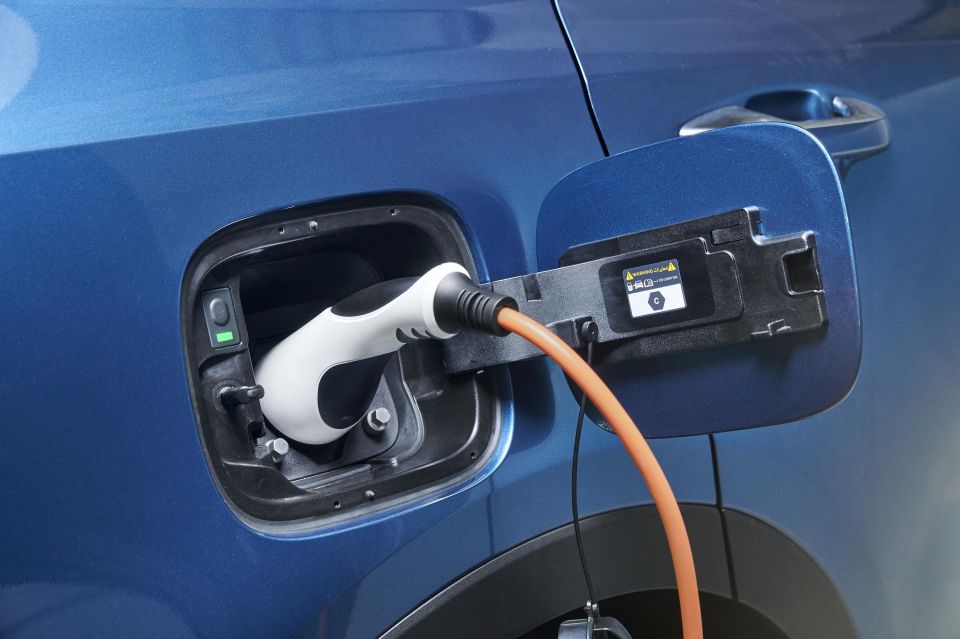
Under the second-row seats is a 14kWh lithium-ion polymer battery pack which can be charged via AC single-phase charging (up to 3.3kW) and weighs 140kg on its own. It’ll take 3 hours 25 minutes to charge from 15 to 95 per cent at this rate through its Type 2 port.
Kia claims pure-electric range of up to 68 kilometres (NEDC), energy consumption of 161Wh/km (16.1kWh/km) combined fuel consumption of just 1.6L/100km, and CO2 emissions of 36g/km. By comparison, the Sorento 2.2D AWD uses 6.1L/100km and emits 159g/km. All versions of the Sorento feature a 67-litre fuel tank, and the PHEV can run on 91 RON unleaded.
At 2056kg (tare), the Sorento PHEV 148kg more than the equivalent Sorento Diesel AWD, while towing is rated at a maximum 1350kg with a downball load of 100kg – down on the 2000kg capacity of V6 and Diesel versions.
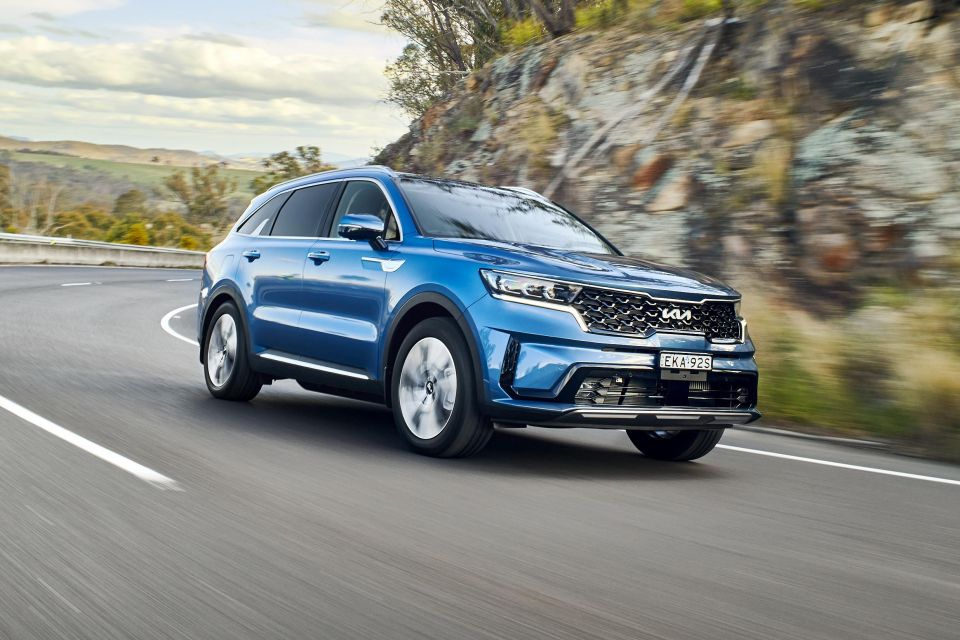
Given the PHEV drivetrain is the only real difference between this GT-Line and combustion-only variants, the drive experience as well as the drivetrain specs are the most obvious difference beyond pricing.
The Sorento was already a comfortable and refined SUV to drive, while still being fairly manageable in tight streets and car parks as well as being a decent steer.
Not much of that has changed with the PHEV, but for me it’s more comfortable and more refined than the diesel model which we had through the garage at the same time.
Firstly being able to run in EV mode for the bulk if not all of your daily commuting means it’s whisper quiet at just about any speed, with only some road noise entering the cabin on rougher black top. Having the smaller 19-inch wheels and chubbier 235/55 tyres, compared to the 255/45 R20 tyres of other GT-Line models, no doubt reduces road roar.

Those chunkier tyres also mean a more comfortable ride, with an added layer of finesse to the Sorento’s locally-tuned suspension. I find the 20-inch wheels a little busy in the city, so the added sidewall and perhaps increased weight gives the impression the PHEV is a touch more softly-sprung.
It certainly drives and rides like a premium vehicle, which is not bad considering the passively-damped springs compared to the adaptive air-sprung setups of German alternatives.
As a Plug-in Hybrid, the Sorento feels more complete than the Volvo XC90 Recharge we tested recently. It offers longer range, the e-motor is more powerful and less likely to require petrol backup up hills or heading down freeway on-ramps, and it’s also a few hundred kilos lighter so it feels a lot more wieldy.
EV mode is great around town. It’s silent, smooth and wonderfully refined. The fluid and light steering is likewise well-suited to the vehicle’s intended purpose, striking a good balance between comfort and feedback.
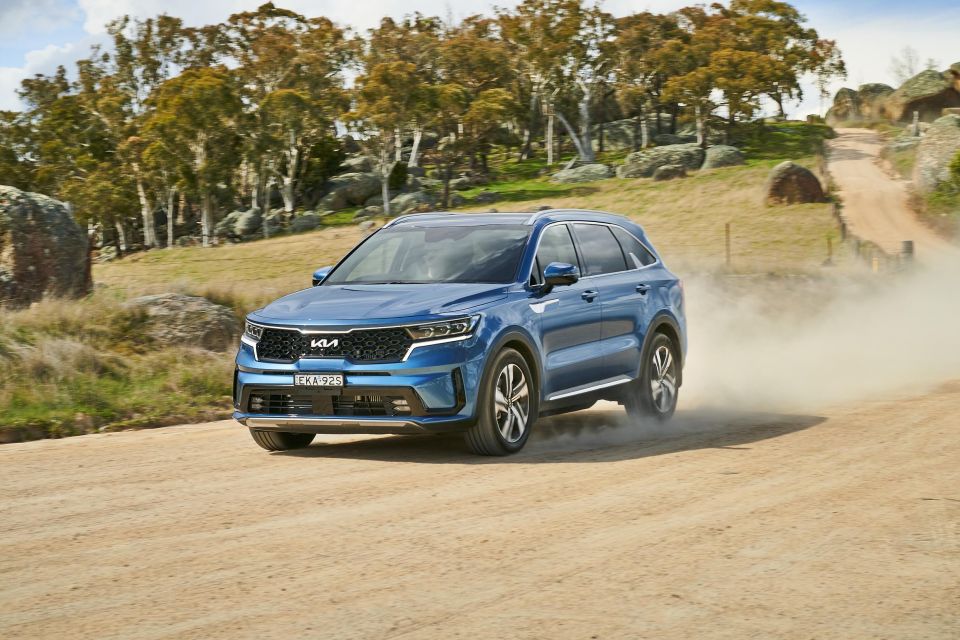
The Sorento will happily stay in electric mode on the freeway with enough battery, sitting at 100 or 110km/h happily – though you will see the battery level drop much faster.
Like the Niro Hybrid, the Sorento PHEV’s electric motor is mounted to the transmission. Unlike some hybrid and electric vehicles with CVTs, you can actually feel the Sorento shuffle through ratios regardless of whether you’re using the electric motor, petrol engine, or both.
It helps to make the PHEV feel a bit more normal, with the only downside being on occasion it’ll be caught a gear too high when going through slip lanes or rolling out of a suburban street, meaning it can exhibit a feeling of lag while you wait for it to shift down.
I consistently managed around 50km of zero-emissions driving in mixed conditions favouring freeway stints, without fully depleting the battery. Note the combined WLTP range in Europe is quoted as 57km, while the ‘up to 68km’ claim is based around ideal urban-skewed driving with more opportunities to charge via braking.
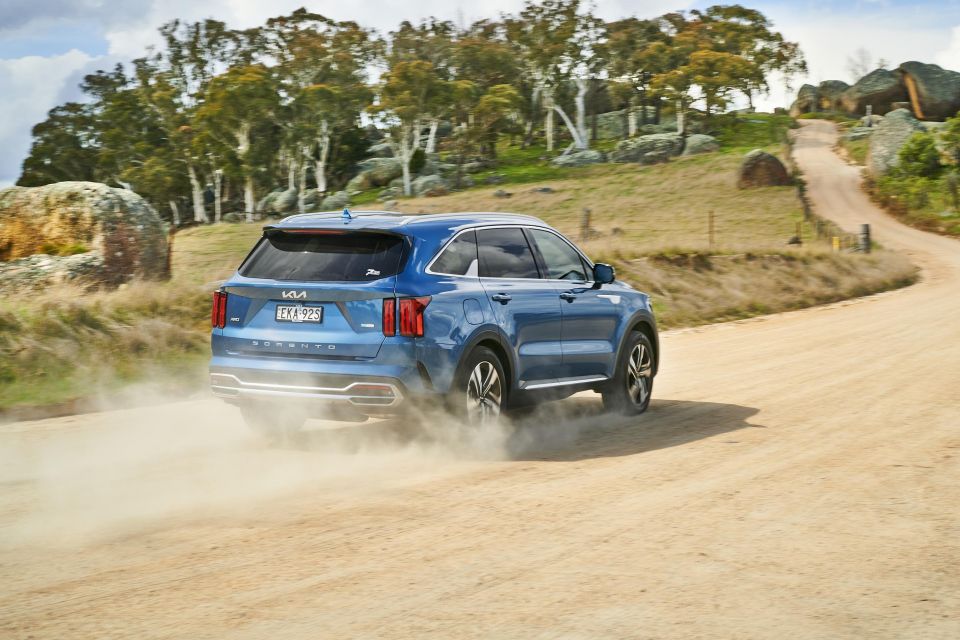
Once the 1.6-litre petrol engine does turn over, it’s still nicely insulated from the cabin and the added performance is welcome. I tried a couple of harder sprints in the Sorento’s Sport mode to sample the performance, and while it won’t blow your socks off it’ll meet the needs of the target buyer just fine.
As a hybrid the PHEV doesn’t feel overly laboured nor does it get thrashy when pushed, boding well for the upcoming Sorento Hybrid FWD and AWD running essentially the same drivetrain with a smaller battery and slightly less powerful electric motor.
You can switch between EV and Hybrid modes on the fly, the latter preserving battery on the freeway by acting more like a conventional hybrid, though oddly there aren’t dedicated Battery Hold or Charge modes for the drivetrain like you’ll find in some other plug-in hybrid vehicles.
The on-demand all-wheel drive system (front-biased) is also standard with the plug-in, and like the diesel offers a lock mode and a torque distribution display in the instrument cluster. Having the added surety of all-paw traction in the wet or on loose surfaces will no doubt add piece of mind, but don’t expect proper off-road ability.
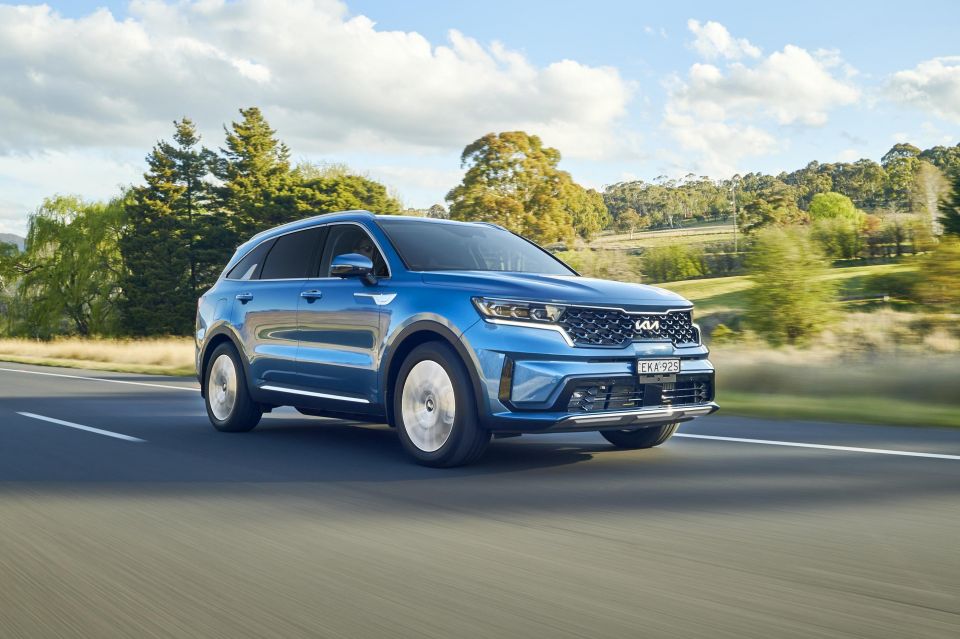
Kia’s assistance systems remain some of the best in the business, with the adaptive cruise control, Lane Following Assist and Blind Spot View Monitor all combining for an essentially semi-autonomous and relaxing drive experience on the open road.
The added vision of the blind-spot cameras is well-integrated and useful, especially compared to Honda’s Lane Watch system, and there’s still the usual blind-spot and rear cross-traffic assists with audible warnings and intervention to prevent collisions. It does all this without feeling over-assisted, too.
At lower speeds the standard lane-keep assist keeps you within the lines without wrestling the steering wheel out of your hands, and there’s varying degrees of intervention for most of these features so you can have them intervene as early or as late as you like – or you can just turn them off.
But having such a fully-featured suite makes the Sorento feel worthy of its asking price – even if the V6 and diesel versions are bargains by comparison – and the techy cabin really matches well with the future-focused drivetrain.
Price aside, I’d happily take the plug-in over the petrol and diesel models for the extra comfort, refinement and efficiency.
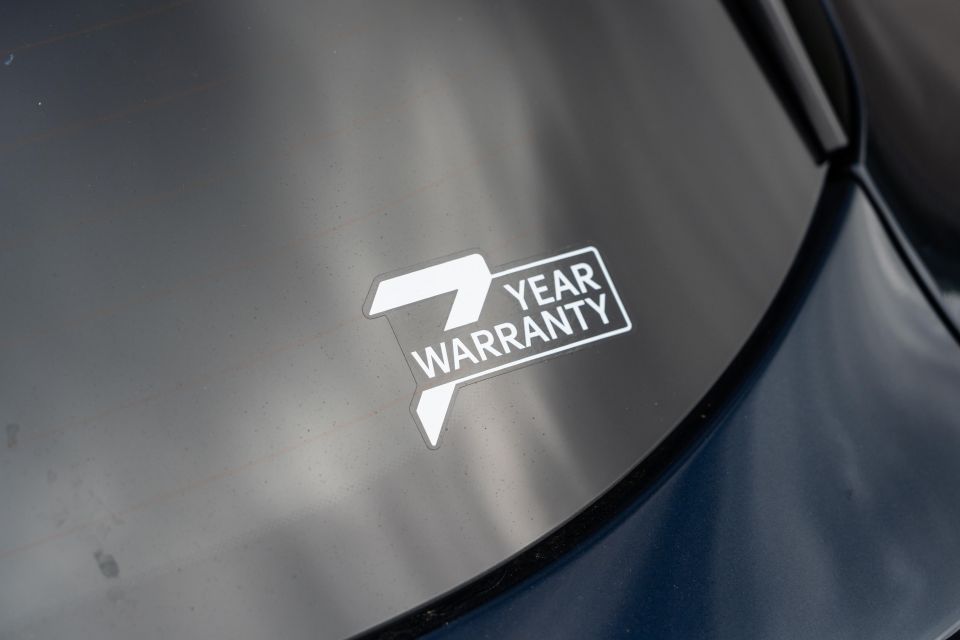
Like the wider Kia range, the Sorento PHEV is covered by a seven-year, unlimited-kilometre warranty that includes roadside assistance for up to eight years as long as you service with a Kia dealer.
High-voltage elements like the battery pack and electric motor fall under a slightly different seven-year, 150,000km warranty.
There’s also capped-price servicing for the duration of the warranty period, with pricing still to be announced. Kia Australia has assured us it’s not too different to petrol and diesel models.
As for charging and fuel use, we ended our week with the Sorento PHEV showing indicated consumption of 4.3L/100km after covering 596km.

For the bulk of the week I drove it largely using EV power on my standard commute which is 23km each way, charging it via a standard wall plug each night which according to the vehicle takes around 5-6 hours at circa 2.2kW.
During these periods the petrol engine would only fire up on occasion up a steep hill or when getting on the freeway, so I regularly saw fuel figures starting with a 1 or a 2 – pretty on par with Kia’s 1.6L/100km combined claim.
Factor in a 200km round trip for Paul to get to and from a filming location which includes long stints on major freeways and country highways, plus the driving on location to shoot the video, and the indicated figure rose to around 6.0L/100km with extended driving on a largely depleted battery.
At an average rate of $0.25 per kWh, each full charge works out to $3.50 based on the Sorento PHEV’s 14kWh battery. This can obviously be offset if you charge it using solutions like solar and doesn’t account for peak/off-peak rates. Kia also hasn’t announced any partnerships with existing public charge provided like Chargefox for the Sorento PHEV.
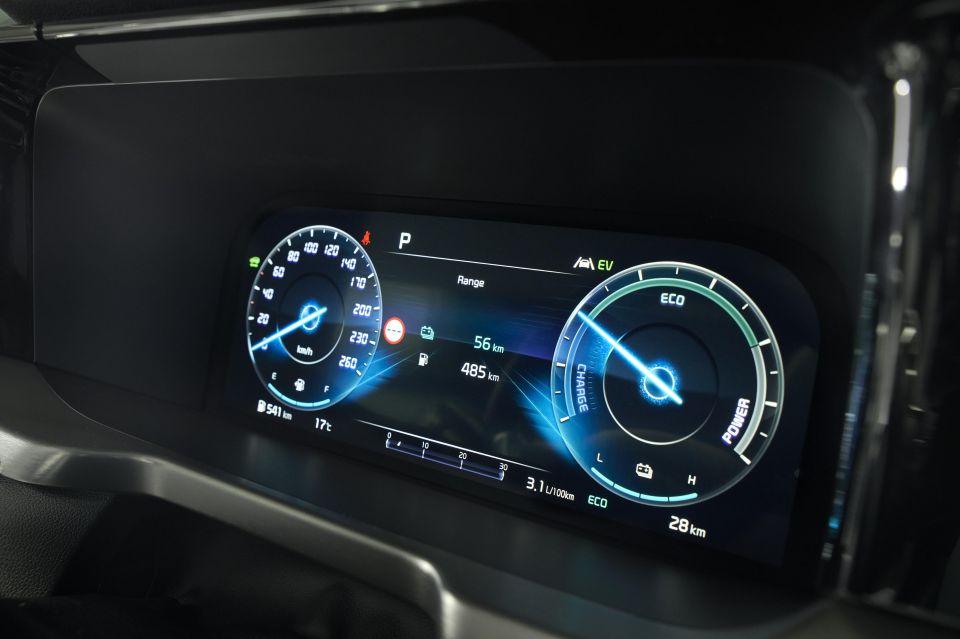
As Paul calculates in the above video, if you look at the cost analysis it could take you two decades to make back the investment, even before you factor in State taxes like Victoria’s $0.20/km PHEV and EV road user charge.
However, buying a PHEV in the current climate isn’t just about reducing running costs. It’s also about reducing your fuel consumption and emissions irrespective of the price, and for many buyers it’s a stepping stone to full electrification with the backup of combustion power and a fuel tank.
Keep in mind justifying the cost of most current EVs over the equivalent petrol, diesel or hybrid vehicle starts with an even larger premium, with long-range driving limited unless you stretch to a Tesla. Beyond the costs, having decent electric-only range brings drivability and refinement improvements.
If you can do the bulk of your driving on electric power, you’ll rarely visit the petrol station. The Sorento PHEV even has a feature called EMM (Engine Maintenance Mode) which will periodically run the engine with no intervention from the driver even if the parameters for electric running are consistently met to stop fuel going off in the tank over time if there’s long periods between trips to the pump.
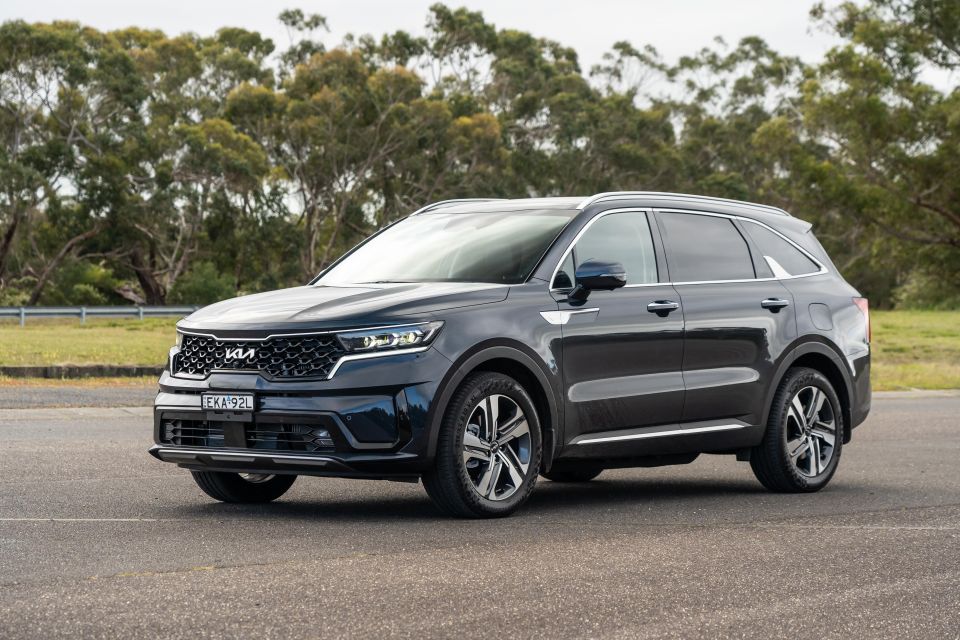
Is the new plug-in Sorento $14,500 better than the diesel? Probably not – but that’s only one part of the equation.
While it’s a substantial step up over the oiler, and even more over the front-driven V6, the Sorento GT-Line PHEV still matches high-spec rivals on price while offering a level of electrification and efficiency none at this end of the market can match.
Charge it every day and it could be weeks if not months between visits to the servo, all while driving a quieter and more comfortable vehicle than combustion-engined equivalents – especially in town where it’ll spend most of its time.
Even better is the fact the added electrical componentry has had barely any impact on the interior packaging, meaning the Sorento Plug-in Hybrid can still carry up to seven people in relative comfort, and swallow all the luggage your family can throw at it.
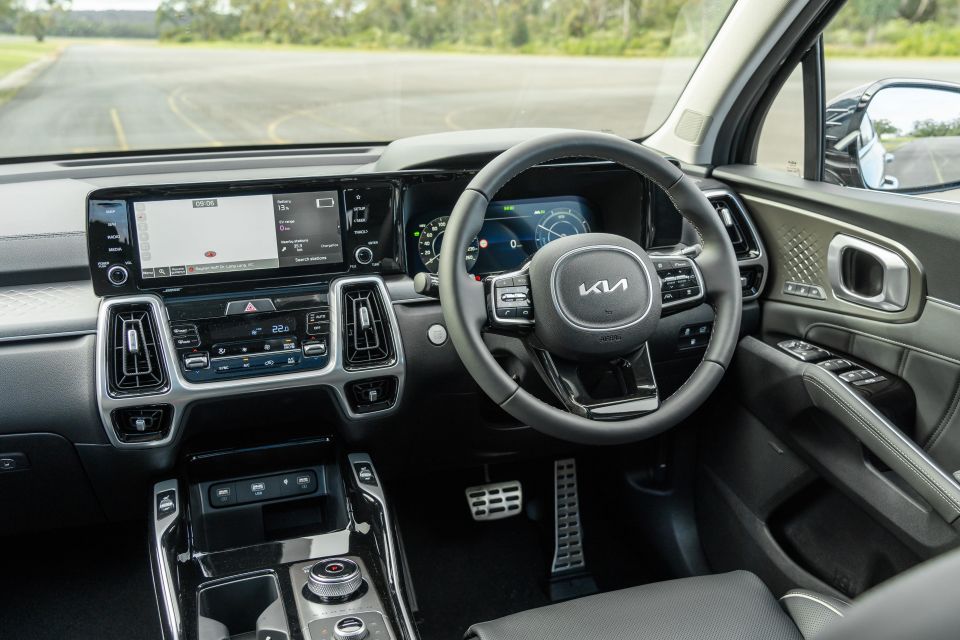
While $80,000 for any mainstream SUV is a hefty wad of cash, the PHEV still does what a lot of premium SUVs do for substantially less spend. If only the price tag started with a seven…
That said, you’ll currently find many near-new Sorento GT-Line 2.2D AWD models listed on the classifieds in the mid- to high-$70,000 bracket given wait times for brand new ones are anywhere between 8-12 months from what we’ve heard. Perhaps the PHEV isn’t so expensive after all if you want one now.
It’ll likely be a pretty niche offering, given the bulk of mainstream buyers prefer the simplicity of a Toyota-style hybrid, which makes me think the Sorento Hybrid due in the first quarter of 2022 will not only be more popular but also the best value offering in the impressive line-up.
Considering a PHEV for the family? Definitely give this a look.
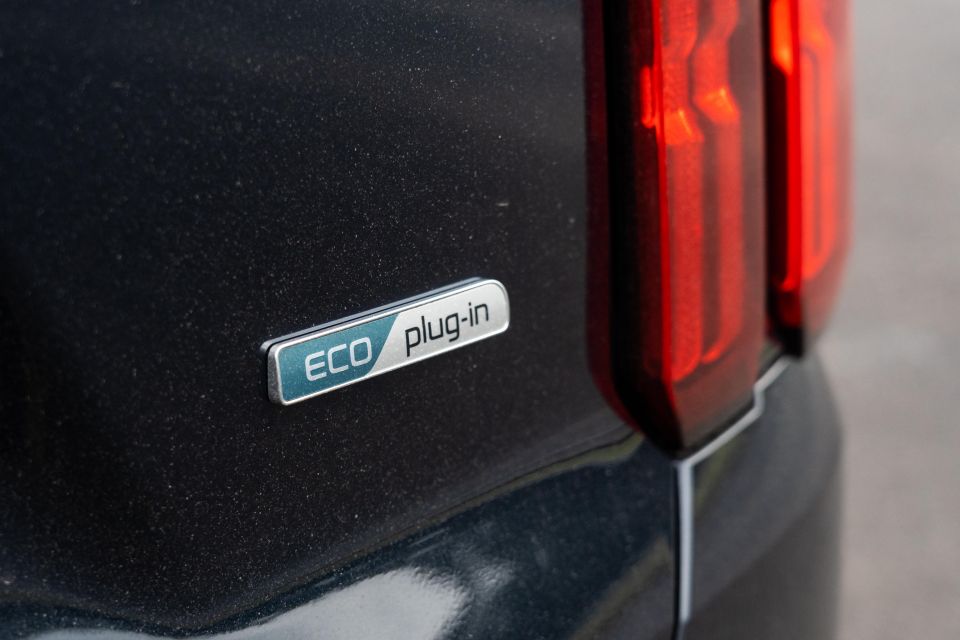
Click the images for the full gallery
MORE: Everything Kia Sorento
Where expert car reviews meet expert car buying – CarExpert gives you trusted advice, personalised service and real savings on your next new car.
James Wong is an automotive journalist and former PR consultant, recognised among Australia’s most prolific motoring writers.


William Stopford
5 Hours Ago


Ben Zachariah
6 Hours Ago


Derek Fung
6 Hours Ago


Matt Campbell
13 Hours Ago


William Stopford
1 Day Ago


Josh Nevett
1 Day Ago